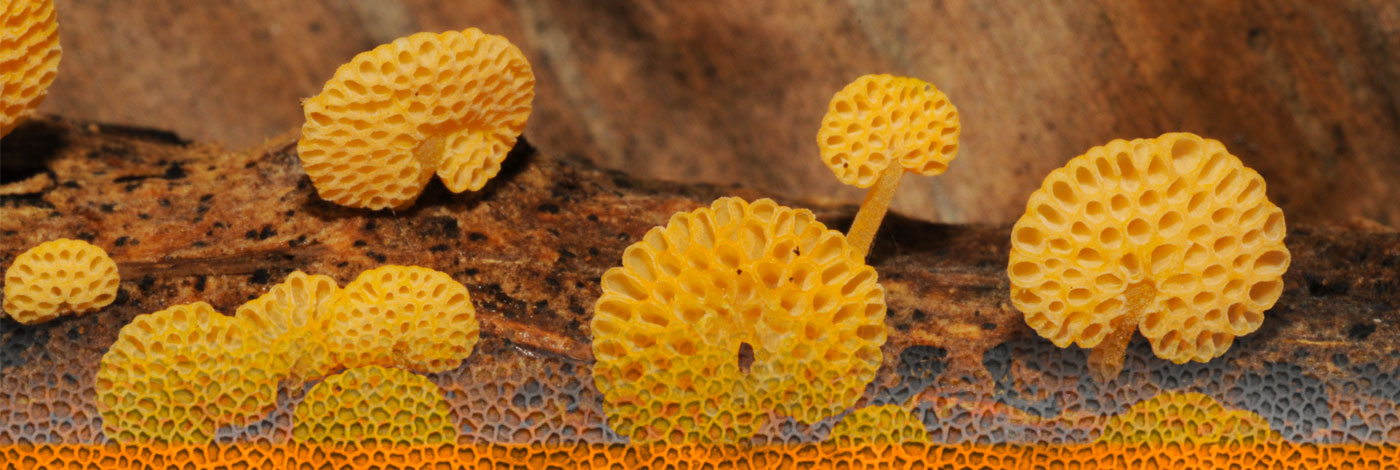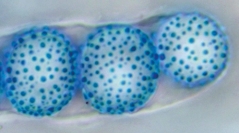

 Cryptogamie, Mycologie
42 (6) - Pages 91-119
Cryptogamie, Mycologie
42 (6) - Pages 91-119Lamprospora bulbiformis M.Vega & Janošík, sp. nov., L. gibbosa M.Vega & Janošík, sp. nov. and L. thelespora Martínez-Gil, M.Vega & E.Rubio, sp. nov. are described and illustrated based on live collections from Cyprus, France, Portugal and Spain. Phylogenetic analyses of the concatenated LSU, SSU and EF1-α gene sequences show the studied collections of the three species form well supported monophyletic clades. Lamprospora bulbiformis sp. nov. infects Fissidens viridulus (Sw. ex anon.) Wahlenb., L. gibbosa sp. nov. has F. crassipes Wilson ex Bruch & Schimp. as host and L. thelespora sp. nov. grows on Cheilothela chloropus (Brid.) Broth. Three Lamprospora De Not. species namely L. tuberculata Seaver, L. tuberculatella Seaver and L. spinulosa Seaver with a slightly similar ascospore ornamentation were described by Seaver from US collections. Results of our studies of their types and additional material collected by Seaver are presented. The host of L. tuberculata is Pleuridium subulatum (Hedw.) Rabenh., that of L. tuberculatella is a species of Weissia Hedw. and that of L. spinulosa is Physcomitrium pyriforme (Hedw.) Bruch & Schimp. It has yet to be proven that species of Lamprospora described from North America also occur in Europe. European collections assigned to any Lamprospora described from North America require revision. It is not unlikely that many or even all of them represent taxa yet to be described. A considerable part of existing literature on bryophilous Pezizales needs to be reevaluated.
Ascomycota, bryoparasitic fungi, Pyronemataceae, ecology, new species